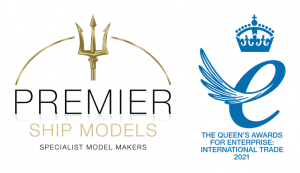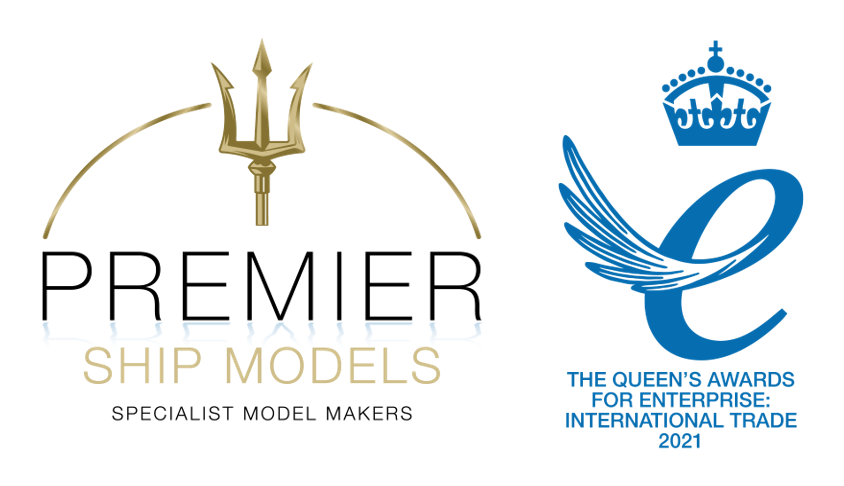In early 2023, Premier Ship Models was tasked with building a miniature model of the ever-iconic Volkswagen camper van. It’s often referred to as the ‘VW Bus’, and is an iconic symbol of the counterculture movement of the 1960s and 70s. Its unique and versatile design, characterised by ample space and modifiable interiors, made it an ideal vehicle for family trips, camping excursions, and cross-country adventures.
The VW Camper Van became synonymous with freedom, exploration, and an unconventional lifestyle. To this day, it holds a revered place in pop culture, embodying an enduring sense of nostalgia and the desire to travel. Its distinct design and cultural significance have secured the VW Camper Van’s status as a timeless automotive icon.
The model Premier Ship Models was tasked with building was to be a prototype design, complete with a decal specific to the customer’s client, and it measured in at averages of 4 inches in length, 2 inches in width, and 2.5 inches in height (these are averages as the panels were sometimes curved for realism).
This project was completed for Whitestone Branding; expert branded product creators based in America. They wanted a model built as a gift for another company, Alteryx, a data science and analytics business.
Whitestone Branding provides clients with specialist merchandise programs, and partner with brands to create powerful experiences for a plethora of different businesses.
They also design and manage e-commerce websites – this involves overseeing inventory and supply chain management, logistics, fulfilment and customer service.
The above are just a few of the things Whitestone Branding specialises in.
The prototype model was to be 3D printed, and, as stated in the overview, it measured in at 4 inches in length, 2 in width and 2.5 in height.
3D-printing is an incredibly complex profession. It requires you to understand three main things:
- The material
- The printer
- The methodology of the piece and your desired end result
The entire process is extremely specialist. Our agent in the Far East focuses on two skillsets when constructing models: creating the model in a digital manner and readying it for printing, and the separate skillset to take the parts from the printer and get them to a professionally high-standard.
Our custom projects always start with liaising with the client as closely as possible, to ensure we bring their vision to life. We strive to be as transparent as possible, allowing the client to see the progress of their order. This also includes agreeing on things such as delivery time and payment terms.
Since this was a small and fairly straightforward order in comparison to others we’ve had, we didn’t need to build a prototype model beforehand. We could just focus on the main project from the very start.
The model was to be 3D printed, and so digital renders needed to be made. The model was constructed with high-density industrial plastics, as well as high-precision photosensitive resin, acrylic and timber, and we utilised 3D simulation modelling, together with laser-cutting. The process itself was much the same as it is when we make a model ship.
For the sake of efficiency, production is temporarily paused, so the client can sign-off on the digital renders. Once this is done, production can continue. This is treated with a great deal of urgency, to save time and resources, and streamline efficiency. We obviously cannot continue if the client is displeased with the plan, but this happened without a hitch.
One of the trickiest stages is converting the digital render into a file that is compatible with the 3D-printer, and so certain software has to be used to achieve this. Before this is done, the render itself is split into chunks – which are actual parts of the model (albeit digitalised) – and accordingly named and saved where appropriate. After this, another piece of software is used to ensure the parts are ready to be printed; making sure they’re of the right scale, are sturdy enough and watertight.
When the renders are ready, they can be printed via laser-cutting, and then building can begin. The construction itself is obviously the hands-on section, where specialists are required. It is known as the ‘finishing.’ This model was split into five ‘panels,’ as it were: the front, back, top, passenger’s side and driver’s side. Each side has miniscule joints to aid in construction. These joints were glued together and then left to dry, before additional features could be added. The decals were printed alongside the pieces and subsequently put on.
This model required great precision and patience, as it could be very delicate in the earlier stages. Four colours were used throughout: black for the windows, white for the text and parts of the decals, silver for the wheels, headlights and windscreen wipers, and a processed blue for the majority of the camper van itself.
Throughout the entire process, photos and renders were frequently sent to the client to ensure they were happy with the progress, and any feedback was welcomed and subsequently incorporated.
Whitestone Branding were thrilled with the result, and were excited to give the Volkswagen model to Alteryx. The project was completed on time, without any problems throughout the entire process. Premier Ship Models were thrilled with the quality of work, and it was exciting to venture back into the automotive world once again!
Commission your own model
If you would like to have your own bespoke model built, please complete the contact form below.


